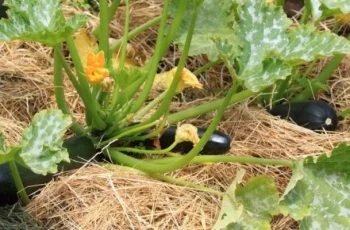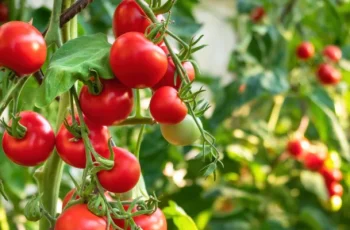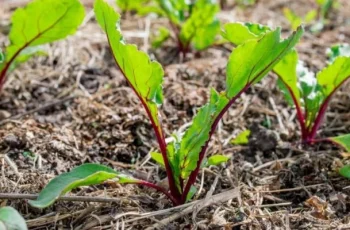Sweet potatoes, with their vibrant colors and rich, sweet flavor, are a beloved staple in many kitchens. Cultivating these nutritious tubers is a rewarding endeavor, but the true test lies in harvesting and storing them correctly. Improper handling can lead to spoilage, diminishing the quality and longevity of your harvest. This guide provides an in-depth exploration of the best practices for digging and storing sweet potatoes, ensuring you can enjoy their deliciousness well beyond the growing season.

Understanding the Sweet Potato Plant and Its Needs
Before delving into the specifics of digging and storing, it’s essential to understand the sweet potato plant itself. A tropical perennial, it thrives in warm climates and requires a long growing season of 90 to 120 days. These tubers develop underground, expanding from the plant’s roots. Unlike regular potatoes, which are tubers themselves, sweet potatoes are enlarged roots. Their delicate skin and high moisture content make them susceptible to damage and decay if not handled properly.
Determining the Optimal Time for Harvest
Timing is paramount when harvesting sweet potatoes. Digging too early results in small, underdeveloped tubers with less flavor and nutritional value. Conversely, waiting too long exposes them to potential frost damage and pests. Several indicators help determine when your sweet potatoes are ready for harvest:
- Foliage Changes: The leaves of the sweet potato plant will begin to yellow and the vines will start to die back. This signals that the plant has reached maturity and is no longer actively growing.
- Days to Maturity: Check the seed packet or plant tag for the specific variety’s days to maturity. This provides a general timeframe for when to expect harvest readiness.
- Soil Temperature: Sweet potatoes prefer warm soil. Harvest before the first frost, as temperatures below 50°F (10°C) can damage the tubers.
- Test Digging: To confirm readiness, gently dig around a plant and examine a tuber. A mature sweet potato will be firm, smooth, and have a well-developed shape.
Ideally, harvest on a dry, sunny day when the soil is not overly wet. This allows the tubers to dry slightly after being unearthed, reducing the risk of rot.
The Art of Digging Sweet Potatoes
Digging sweet potatoes requires a gentle touch and the right tools. Their delicate skins bruise easily, so careful handling is crucial.
- Tools: A garden fork or shovel with a broad, flat blade is ideal. The fork is often preferred as it loosens the soil without slicing through the tubers.
- Technique: Insert the tool approximately 8 to 12 inches away from the plant’s stem to avoid damaging the tubers. Gently loosen the soil around the plant, lifting and turning it to expose the sweet potatoes.
- Hand Harvesting: Once the tubers are visible, use your hands to carefully lift them from the soil. Avoid pulling on the vines, as this can damage the tubers.
- Cleaning: Gently brush off any loose soil with your hands or a soft cloth. Do not wash the sweet potatoes at this stage, as moisture can promote rot.
Curing: The Key to Sweetness and Longevity
Curing is a critical step in preparing sweet potatoes for long-term storage. This process heals minor cuts and bruises, thickens the skin, and converts starches into sugars, enhancing their sweetness.
- Conditions: Curing requires warm, humid conditions. Aim for a temperature of 80-85°F (27-29°C) and a relative humidity of 85-90%.
- Duration: Cure the sweet potatoes for 10 to 14 days.
- Setup: A well-ventilated space, such as a shed, garage, or greenhouse, is ideal. You can also use a spare room or a specially constructed curing box.
- Arrangement: Place the sweet potatoes in shallow crates or on wire racks, ensuring they are not touching. This allows for proper air circulation.
- Monitoring: Monitor the temperature and humidity regularly, making adjustments as needed.
Storage: Preserving Your Harvest for Months
After curing, sweet potatoes need to be stored in a cool, dark, and well-ventilated location to prevent spoilage.
- Conditions: The ideal storage temperature is 55-60°F (13-16°C) with a relative humidity of 75-80%.
- Location: A basement, root cellar, or pantry is ideal. Avoid storing sweet potatoes in the refrigerator, as temperatures below 50°F (10°C) can cause chilling injury.
- Containers: Use breathable containers such as wooden crates, burlap sacks, or mesh bags. Avoid plastic containers, as they can trap moisture and promote rot.
- Arrangement: Arrange the sweet potatoes in a single layer, ensuring they are not touching.
- Darkness: Store the sweet potatoes in a dark location to prevent sprouting.
Common Mistakes to Avoid
- Washing Before Storage: Washing sweet potatoes before storing them can introduce moisture and promote rot.
- Refrigeration: Storing sweet potatoes in the refrigerator can cause chilling injury, leading to hard, flavorless tubers.
- Light Exposure: Light can cause sweet potatoes to sprout and turn green, affecting their flavor and texture.
- Overcrowding: Overcrowding can restrict airflow and increase the risk of rot.
- Temperature Fluctuations: Exposing sweet potatoes to fluctuating temperatures can lead to spoilage.
Monitoring and Maintaining Stored Sweet Potatoes
Regularly check your stored sweet potatoes for signs of rot or spoilage. Remove any damaged tubers immediately to prevent the spread of decay. Monitor the temperature and humidity of your storage area, making adjustments as needed. Rotate your stock, using older tubers first.
Long-Term Preservation Methods
For sweet potatoes that need to be stored for longer periods, consider these preservation methods:
- Freezing: Cooked sweet potatoes can be frozen for up to a year.
- Dehydrating: Dehydrated sweet potatoes can be stored for 12 to 18 months.
- Canning: Canned sweet potatoes can be stored for several years.

Conclusion: A Rewarding Harvest
Digging and storing sweet potatoes requires careful attention to detail, but the rewards are well worth the effort. By following these guidelines, you can ensure a bountiful harvest that will provide you with delicious, nutritious sweet potatoes for months to come. From understanding the plant’s needs to mastering the art of curing and storage, each step contributes to preserving the quality and flavor of your harvest. With patience and practice, you can transform your sweet potato harvest into a long-lasting culinary treasure.



